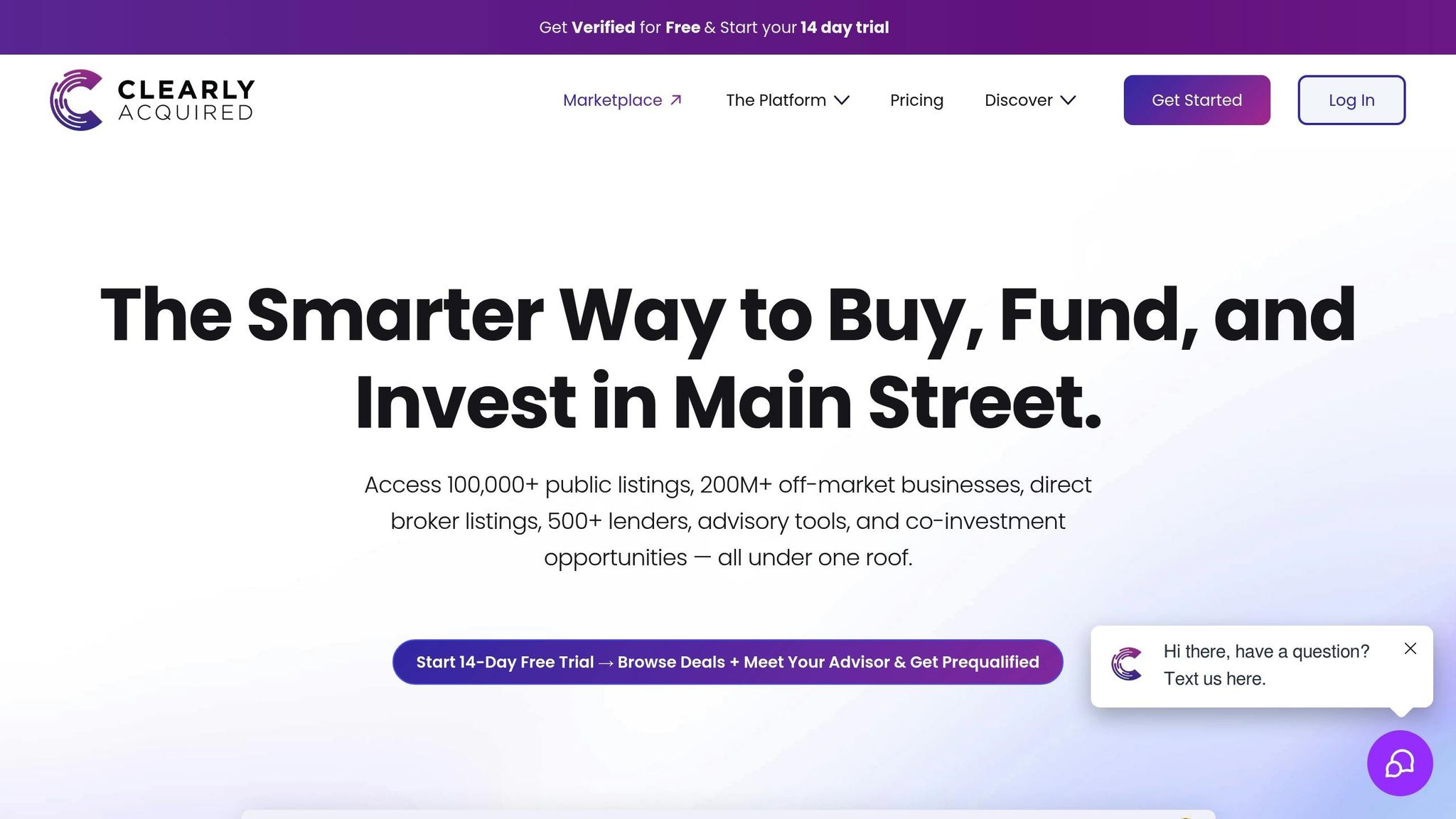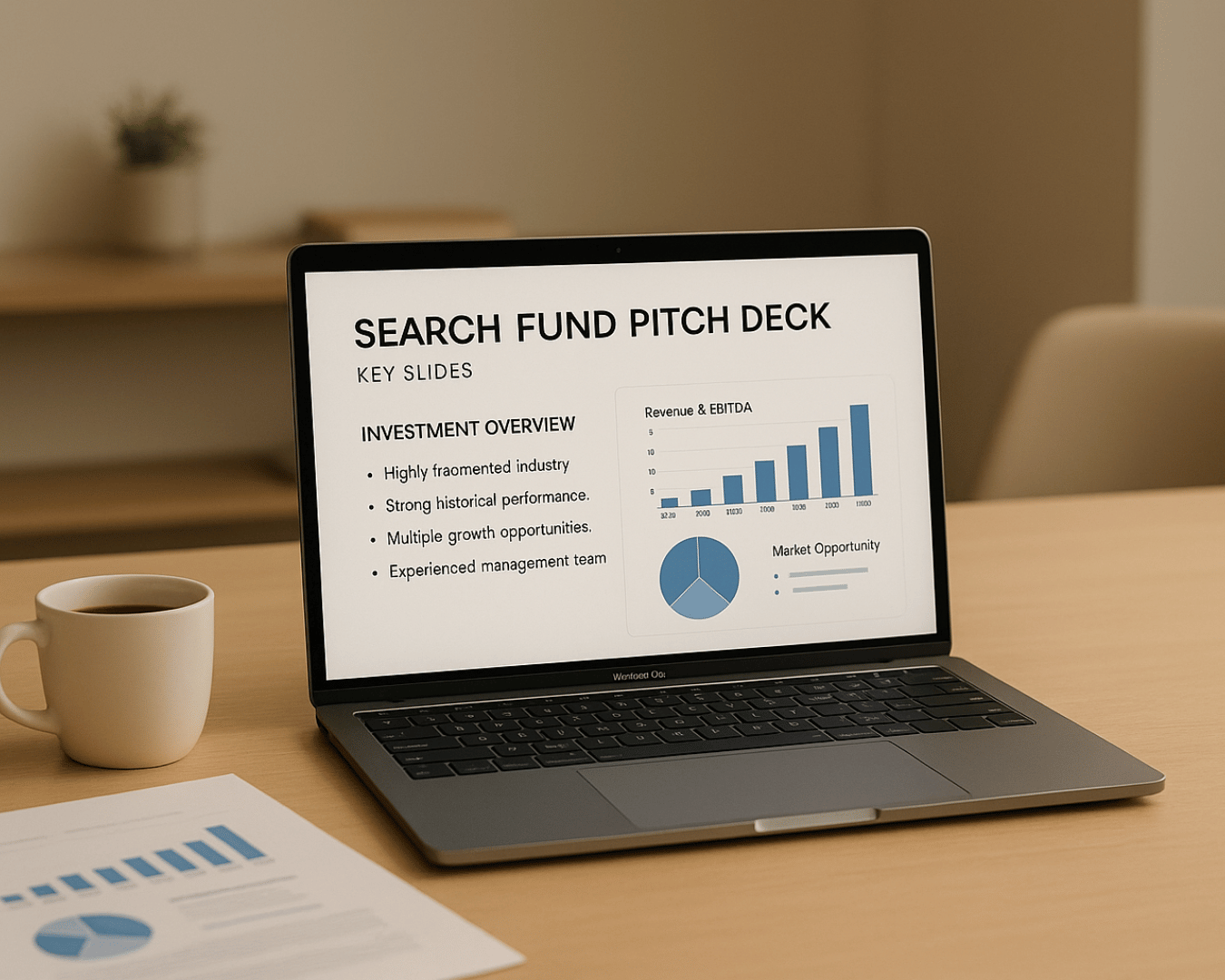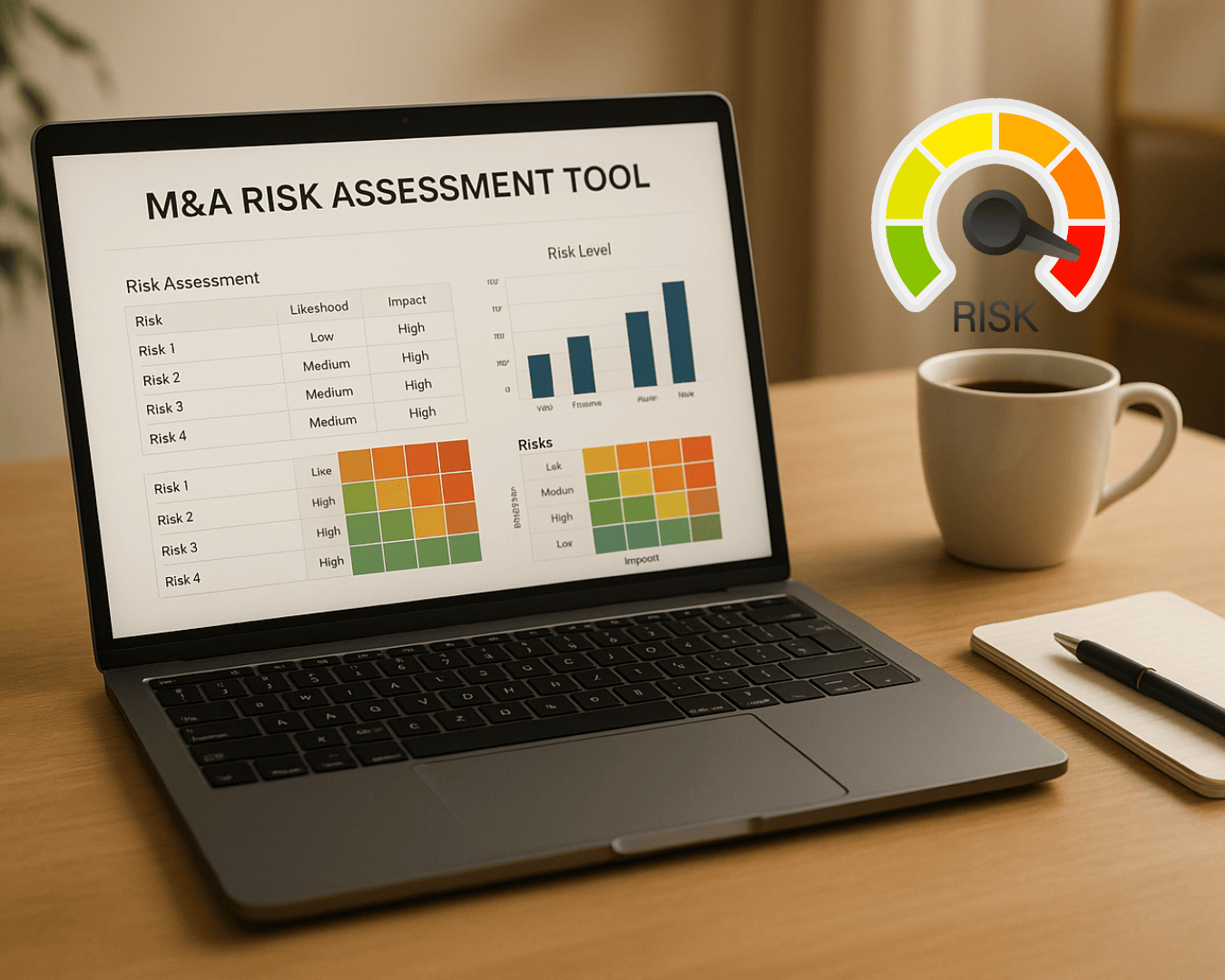Analyzing audience data helps small and medium-sized businesses (SMBs) understand their customers and make smarter decisions to drive growth. By examining demographics, behaviors, and preferences, you can create better marketing strategies, improve products, and increase customer loyalty. Here's a quick overview of what you need to know:
- Set Clear Goals: Define what you want to achieve, like boosting revenue, improving retention, or reducing costs. Align these goals with your overall business strategy.
- Track Key Metrics: Focus on metrics that matter, such as revenue, customer lifetime value, and retention rates.
- Collect Data: Use tools like Google Analytics, social media insights, and customer surveys to gather relevant information.
- Analyze Patterns: Look for trends, segment your audience, and test strategies using methods like A/B testing.
- Turn Insights into Action: Use the data to personalize campaigns, identify growth opportunities, and improve customer experiences.
Example: A Michigan-based SMB increased online sales by 28% in three months by analyzing mobile traffic and tailoring promotions to their primary audience - women aged 25–40.
With tools like AI-powered analytics and platforms such as Clearly Acquired, SMBs can simplify data analysis and compete effectively. The key is to consistently track, analyze, and act on audience data to stay ahead in a changing market.
So What? How to Do an Audience Analysis
Setting Clear Analytics Goals for Business Growth
Defining your analytics goals is the first step to turning raw data into meaningful insights. Think of these goals as your blueprint - they shape every decision, from what data you gather to the tools you use for analysis. For example, a 24-hour grocery chain wanted to understand customer behavior during late hours. By analyzing sales data, they noticed a spike in purchases between 11:00 PM and 1:00 AM on weeknights, driven by young professionals and night shift workers buying ready-to-eat meals. Acting on this insight, they introduced a "Midnight Munchies" section and launched ads targeting night owls. The result? Nighttime sales jumped by 33% in just a few months. This success came from having a clear goal: understanding shopping habits during off-peak hours.
From here, your analytics goals should align seamlessly with your broader business strategy.
Matching Data Goals with Business Objectives
Your analytics efforts should directly support your business goals. For instance, if your goal is a 25% revenue increase, focus on metrics that reveal sales growth opportunities. If customer retention is your priority, track metrics that highlight loyalty trends.
Start by pinpointing the specific challenge you want to tackle. Is it high customer acquisition costs? Expanding into a new market? Improving customer satisfaction? Take HubSpot as an example: they tailored their content strategy to different stages of customer interaction. For new prospects, they offered educational resources. For potential buyers, they highlighted how their software addressed marketing challenges. And for existing clients, they provided optimization tips. This tailored, data-driven approach led to higher retention rates, increased sales, and stronger brand awareness. By tying analytics to clear business goals, you can make faster, smarter decisions that grow revenue and cut costs.
Involving key stakeholders across your organization is equally important. While your sales team might focus on lead quality metrics, your customer service team could prioritize satisfaction scores. A collaborative approach ensures your analytics strategy supports the entire company’s mission.
Once your goals align with your business strategy, the next step is to choose the right metrics.
Choosing the Right Metrics to Track
Rather than tracking every possible metric, focus on KPIs that truly impact your business outcomes.
For small and medium-sized businesses (SMBs), the most valuable metrics often fall into three main categories:
- Sales and Marketing Metrics: Monitor revenue (monthly, quarterly, or annual), lead conversion rates, and customer acquisition costs (CAC). These directly reflect growth and profitability.
- Customer-Focused Metrics: Keep an eye on customer lifetime value (CLV), retention rates, and satisfaction scores through tools like Net Promoter Score (NPS) or customer surveys.
95% of consumers say excellent customer service influences their brand loyalty.
- Operational Metrics: Track on-time delivery rates, shipping accuracy, and resource utilization. These metrics help you identify inefficiencies, reduce costs, and improve customer satisfaction.
Here’s a quick breakdown of key metrics:
| Category | Key Metrics | Why It Matters |
|---|---|---|
| Sales & Marketing | Sales revenue, Lead conversion rate, CAC | Directly impacts growth and profitability |
| Customer Relationship | CLV, Retention rate, NPS | Indicates long-term business health |
| Operations | On-time delivery, Shipping accuracy, Resource utilization | Enhances efficiency and customer experience |
Focusing on a small, meaningful set of metrics often yields better results for SMBs. For instance, a SaaS company noticing a spike in churn after a software update might prioritize product improvements. Similarly, an e-commerce business could use A/B testing to refine product pages and boost conversions.
Collecting and Organizing Audience Data
Once you've outlined your analytics goals, the next step is gathering and organizing audience data. This process lays the groundwork for meaningful analysis. As market research expert Jodie Shaw explains:
"Actionable market research must start with primary sources."
The most valuable insights come from primary data - information collected directly from your customers and prospects. This type of data provides specific answers about your business that you won't find elsewhere.
For instance, website analytics tools like Google Analytics can show you how visitors interact with your site, including page views, referral sources, and where users tend to leave. Meanwhile, sales records help you identify purchasing patterns, seasonal trends, and customer preferences, giving you a clearer picture of what people buy, when they buy it, and how often they return.
Social media engagement is another treasure trove of information. Comments, shares, likes, and direct messages provide immediate feedback on what resonates with your audience. Similarly, email marketing data reveals which subject lines grab attention, which content drives clicks, and how your audience reacts to different offers.
Customer feedback is equally critical. Surveys, reviews, and direct conversations give you insights into the "why" behind customer behavior. To get the most out of surveys, include open-ended questions that encourage detailed responses. These responses can uncover motivations and preferences you might not have anticipated. Social media platforms are particularly effective for sharing surveys or recruiting participants for focus groups.
Speaking of focus groups, gathering 6 to 10 participants allows you to explore diverse opinions in a manageable setting. Additionally, field studies - where you observe customers in their natural environment - can reveal behaviors that surveys alone might overlook.
Using a combination of these primary research techniques provides a more complete understanding of your target audience. This approach not only helps you answer specific questions about your brand but also allows you to hear directly from consumers. By consolidating insights from all these sources, you'll be better equipped to extract precise, actionable data.
Analyzing Audience Data for Practical Insights
Once you've collected and organized your audience data, the next step is turning those raw numbers into meaningful insights. This process helps you uncover customer needs, preferences, and behaviors.
Data Analysis Methods
Trend analysis is a key starting point. By examining data over time, you can identify patterns in customer behavior. For instance, you might notice that your website traffic consistently peaks on Tuesdays at 2:00 PM or that specific products sell better during certain seasons.
Demographic analysis helps you understand the basic characteristics of your audience, such as their age, gender, location, income level, and education. While this tells you who your customers are, pairing it with psychographic analysis provides insights into why they make their purchasing decisions.
Behavioral analysis focuses on tracking how customers interact with your brand across various touchpoints. This includes website navigation habits, email open rates, social media engagement, and purchase history. Combining these behavioral insights with demographic and psychographic data gives you a well-rounded view of your audience.
Segmentation analysis involves dividing your audience into smaller groups based on shared traits or behaviors. For example, you might create segments based on purchase frequency, geographic location, or engagement levels with your campaigns. This approach allows for more targeted and effective marketing strategies.
A/B testing is a practical method for identifying customer preferences. By comparing the performance of two variations of marketing materials, website pages, or email campaigns, you can determine which resonates better with your audience. This data-driven approach can guide your growth strategies.
Together, these methods help you transform raw data into actionable insights that drive smarter decisions.
Creating Visual Reports and Dashboards
Visualizing data makes it easier to interpret and share insights. Tools like charts, graphs, and dashboards simplify complex information, helping you spot trends, identify anomalies, and communicate findings effectively - even to team members less familiar with data analysis.
- Line charts are ideal for tracking trends over time, such as monthly website visits or quarterly revenue growth.
- Bar charts work well for comparing categories, like the performance of different marketing channels.
- Pie charts break down proportions, such as the age distribution of your customer base.
- Heat maps highlight website behavior, showing where users click most and which areas they ignore. This insight helps optimize layouts and improve user experience.
Interactive dashboards take things a step further by allowing you to filter and explore specific data points in real-time. These dashboards can automatically update, providing up-to-date insights into customer behavior and campaign performance without the hassle of manual reporting.
When designing visual reports, focus on metrics that align with your business goals. For example, if your objective is to boost online sales, prioritize metrics like conversion rates, average order value, and customer acquisition costs over vanity metrics like page views.
Analysis Tools and Software
Several tools and platforms can simplify audience analysis and provide deeper insights:
- Google Analytics: This free tool is excellent for understanding how visitors interact with your website. It highlights popular pages, average time spent on-site, and traffic sources, helping you identify what drives the most valuable visitors.
- Social media analytics: Platforms like Facebook, Instagram, LinkedIn, and Twitter offer built-in tools to track follower demographics, engagement, and content preferences. These insights include metrics like reach, impressions, and click-through rates.
- CRM analytics: Customer relationship management tools track the entire customer journey, from first interaction to repeat purchases. This helps you identify your most valuable customers and understand their buying habits.
- AI-powered tools: These solutions can analyze large datasets quickly, uncover patterns, predict trends, and even suggest optimization strategies. They’re particularly useful for small businesses looking to streamline the analysis process and uncover insights that might otherwise go unnoticed.
For a complete understanding of your audience, combine quantitative data with qualitative feedback. Regularly updating your analysis - every 6 to 12 months, with quarterly reviews during significant market shifts - ensures your strategies stay relevant and effective. Customer preferences are always evolving, and staying ahead of these changes is key to long-term success.
sbb-itb-a3ef7c1
Converting Data Insights into Growth Plans
Transform audience insights into strategies that deliver measurable business results.
Dividing Your Audience into Groups
Breaking your audience into smaller groups based on shared traits or behaviors can make your marketing more effective. This process, known as customer segmentation, allows you to create personalized experiences that align with specific needs.
To start, analyze your customer data for patterns. Look at factors like purchase frequency, average order value, location, and how customers engage with your campaigns. For example, you might find that certain age groups prefer specific communication channels or that particular regions respond better to targeted offers.
"Marketing segmentation makes companies 60% more likely to understand customers' challenges and 130% more likely to know their intentions".
A great example is BarkBox. By analyzing their data, they identified three key customer segments: "New Puppy", "Big Dog", and "Small Dog." Each group had unique needs, so BarkBox tailored its marketing messages and offers accordingly. The result? A 31% boost in customer retention and a 169% spike in revenue.
Once you've identified your segments, create detailed customer personas for each. These personas help your team understand the motivations, challenges, and preferences of your audience, making it easier to craft targeted strategies. Businesses that align their strategies with customer segments see an average yearly profit growth of 15%, compared to just 5% for those that don't.
Use these insights to uncover new opportunities and refine your approach.
Finding New Business Opportunities
Segmented data can reveal untapped markets and areas for growth. By analyzing customer behavior, you can identify gaps in your current offerings and explore new opportunities.
Start by reviewing purchase histories and customer feedback. Are certain products often bought together? Consider bundling them or suggesting related items during checkout. Customer support inquiries can also highlight unmet needs or frustrations, signaling potential for new product development.
"Customer behavior data is your best tool for finding sales opportunities, so begin by establishing quality data sources and monitoring them routinely".
External trends can also open doors. For instance, growing interest in contactless services could inspire new delivery options or digital payment methods. Dollar Shave Club provides a great example. They identified a segment of frequent travelers who needed portable shaving solutions. In response, they launched a travel kit, which led to a 50% increase in sales.
Geographic trends are another area to explore. If you see strong demand from regions where you currently have little presence, it might be time to expand your reach or adjust your marketing to better engage those audiences.
Presenting Insights to Team Members and Partners
Turning data into action requires clear communication. When presenting insights, focus on the business impact rather than technical details. For instance, instead of diving into the methodology, start with a statement like, "Our audience analysis reveals a significant opportunity to boost revenue by targeting underserved segments." This keeps the conversation focused on outcomes.
Visual aids like charts and graphs can make your data more digestible. For example, a line chart showing growth in customer lifetime value, paired with an explanation of the benefits, can make your case more compelling.
"Research shows that 77% of marketing ROI comes from segmented, targeted, and triggered campaigns".
Use statistics like this to back up your recommendations and justify the resources needed to act on them. Present clear action plans with timelines, required resources, and expected outcomes. This approach shows that your insights lead directly to actionable steps.
Be ready to address concerns. If your recommendations involve significant investments or changes, acknowledge potential challenges and explain how the benefits outweigh the risks. Suggesting pilot programs or contingency plans can help ease hesitations.
Blue Apron offers a relatable example. By identifying a "Vegetarians" segment, they developed tailored meal plans and marketing messages. Presenting this opportunity clearly allowed their team to implement changes that increased customer retention by 6%.
Keep in mind that 71% of customers now expect personalized interactions, and 76% feel frustrated when brands fail to meet these expectations. This highlights the importance of using data to deliver tailored experiences.
Finally, outline a timeline for implementing your recommendations. Start with quick wins to demonstrate immediate value, then gradually tackle larger initiatives. This step-by-step approach builds momentum and shows stakeholders how data-driven insights can lead to real business growth.
Using Clearly Acquired's Tools and Resources

Clearly Acquired takes audience insights and turns them into actionable strategies for growth. By equipping small and medium-sized businesses (SMBs) with the tools to harness data effectively, the platform empowers users to make smarter decisions and achieve measurable results.
With a reach of 65 million users and a database of over 3.2 million businesses across 50+ industries, Clearly Acquired generates $6.5 million in monthly sales. This vast scale offers a treasure trove of market data and benchmarking opportunities, helping businesses refine their audience analysis and growth strategies.
AI-Powered Analytics for SMBs
Clearly Acquired's AI tools simplify the often-daunting task of analyzing complex data. With AI-driven search capabilities, the platform uncovers patterns in market trends, customer behavior, and performance metrics.
"The Clearly Acquired Platform delivers powerful tools - advanced search, interactive dashboards, and messaging - to streamline acquisitions and empower users with clarity and efficiency".
These AI features are especially useful for businesses exploring acquisitions or strategic partnerships. By analyzing behavioral trends identified earlier, the platform helps pinpoint untapped market segments and potential partners. Whether you're looking to expand your reach or secure new opportunities, these tools make scaling more efficient and targeted.
Data Management Features
As your business grows, managing and protecting your data becomes increasingly important. Clearly Acquired offers several tools to help you stay organized and secure while keeping your team aligned on growth goals.
The Deal Hub acts as a centralized workspace, bringing together audience research, market analysis, and strategic plans. Its built-in CRM functionality allows you to track interactions with potential customers, partners, or acquisition targets identified through your data analysis.
"Clearly Acquired provides brokers with a comprehensive and intuitive Deal Hub to enhance deal management, streamline collaboration, and maximize the effectiveness of business acquisitions".
For added security, the platform's Data Room includes advanced features like Plaid technology for user verification and automated NDA deployment through DocuSign. This ensures that sensitive information and strategic plans remain secure while remaining accessible to authorized team members. Additionally, custom dashboards provide a clear view of audience data alongside key performance metrics, while the Listing Management system highlights your business's growth potential to investors or buyers. These tools not only safeguard your data but also enhance decision-making, setting the stage for future growth.
Educational Resources for SMB Growth
Making sense of audience data and turning it into action requires more than just tools - it requires knowledge. Clearly Acquired supports SMBs with educational resources tailored to business owners and operators.
The "Purchase to Profits: Business Acquisition Course" offers step-by-step guidance on identifying opportunities, evaluating market potential, and structuring deals. This course is designed to help both first-time buyers and seasoned operators develop the skills needed to drive growth through data analysis.
A success story from CycleBar Franchise illustrates the platform’s value. Facing challenges with SBA lending, the franchise turned to Clearly Acquired for financing. Sydnie Whitmer described their experience as "unbelievable service", noting that the platform secured funding quickly and ultimately saved the project.
Conclusion: Growing Your SMB Through Data-Driven Decisions
For small and medium-sized businesses, sustainable growth begins with truly understanding your audience - and that starts with data. With clear analytics goals and reliable data collection, SMBs can make decisions that lead to tangible results.
Businesses that lean on data-driven strategies gain a noticeable edge by making quicker, smarter decisions. Bain & Company found that companies using data effectively are five times more likely to act faster than their competitors. This agility becomes essential when markets shift or new opportunities arise. By turning audience insights into targeted strategies, SMBs can see measurable improvements. Research from ExactBuyer highlights how refining campaigns based on audience data can stretch marketing budgets further and boost conversion rates.
AI-powered analytics tools are becoming a game-changer for modern SMBs. These tools automate much of the data collection process and deliver real-time insights, freeing business owners from the grind of manual analysis. Instead of spending hours combing through spreadsheets, entrepreneurs can focus on making strategic moves.
Platforms like Clearly Acquired take these advancements a step further by combining AI-driven analytics, secure data management, and educational resources. This integrated approach equips SMBs with the tools they need to make confident, data-backed decisions.
Thriving businesses today share a few habits: they track key metrics consistently, adapt their strategies based on fresh data, and foster a culture of ongoing learning. Whether you're diving into customer behavior, exploring market opportunities, or planning partnerships, one truth remains constant: quality data is the foundation of quality decisions.
Your audience data holds the power to uncover growth opportunities that intuition alone might miss. By adopting the right tools and processes now, you'll position your business to stay ahead in an ever-evolving market.
FAQs
How can small businesses align their analytics goals with their overall business objectives?
To make sure your analytics efforts align with your business goals, start by pinpointing your top priorities and the metrics that tie directly to them. This means identifying key performance indicators (KPIs) that truly reflect growth and success for your business. Focus on gathering data from sources that matter most to your objectives.
It's also important to regularly evaluate your analytics strategies. Business priorities can shift, so your approach to data should adapt as well. Keep stakeholders involved and maintain open communication - this collaboration can help fine-tune your strategies and ensure your analytics focus stays on track with what drives your business forward.
What are the most effective tools and methods to gather and organize audience data for small business growth?
To gather and manage audience data efficiently, small businesses can tap into tools like CRM systems, data management platforms, social media analytics, website tracking tools, and transactional tracking systems. These resources provide insights into customer demographics, preferences, behaviors, and feedback - key elements for spotting trends and fine-tuning marketing efforts.
Beyond digital tools, traditional methods like surveys, focus groups, interviews, and social media monitoring can uncover valuable, actionable insights. Organizing all this information on a centralized platform makes it easier to analyze and apply, paving the way for informed decision-making. Using a mix of these tools and techniques, small businesses can boost customer engagement and drive meaningful growth.
How can small businesses use customer segmentation to find new opportunities and retain customers?
How Customer Segmentation Helps Small Businesses
Customer segmentation is a game-changer for small businesses. It’s the process of dividing your audience into groups based on things like demographics, behaviors, or preferences. Why does this matter? Because when you know what makes each group tick, you can create marketing campaigns that feel personal and relevant. The result? Better engagement and, ultimately, more sales.
But it’s not just about attracting new customers - segmentation is also a powerful tool for keeping the ones you already have. By personalizing your communication and addressing their unique needs, you can build stronger relationships. This kind of tailored approach not only boosts customer satisfaction but also encourages loyalty and repeat business. And let’s face it, happy, returning customers are the foundation for any small business looking to grow.






















.png)







































.png)















































